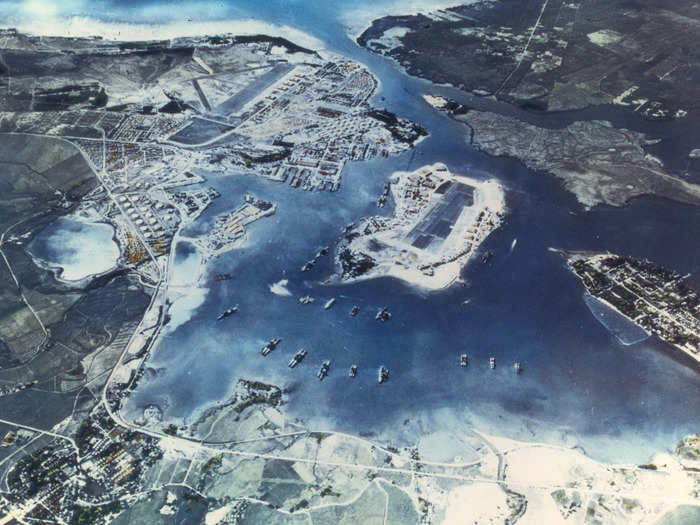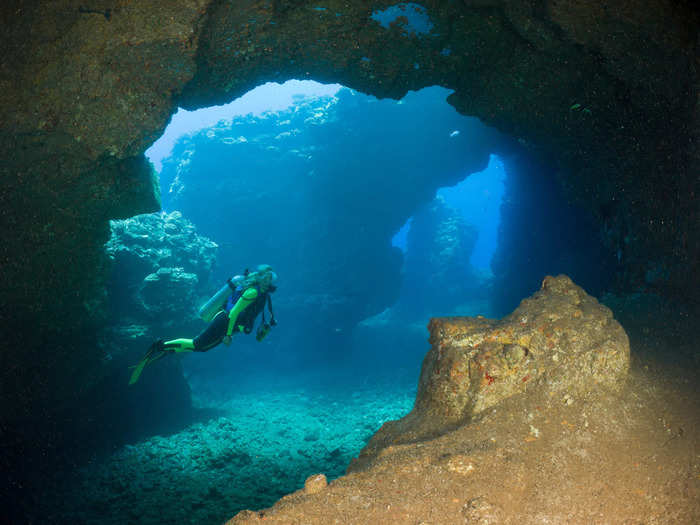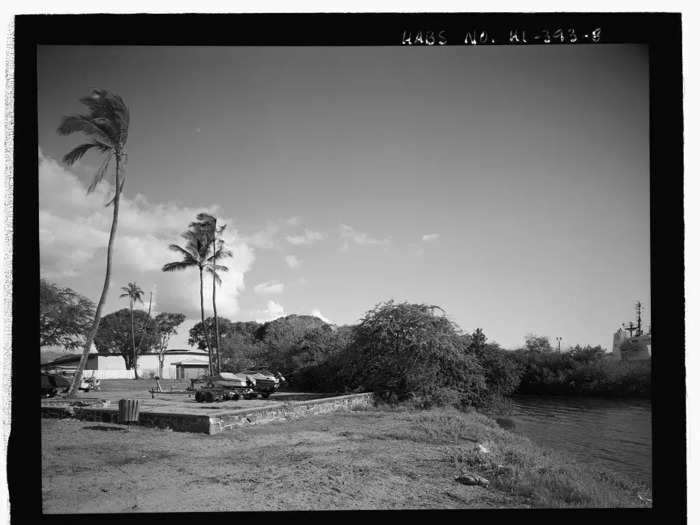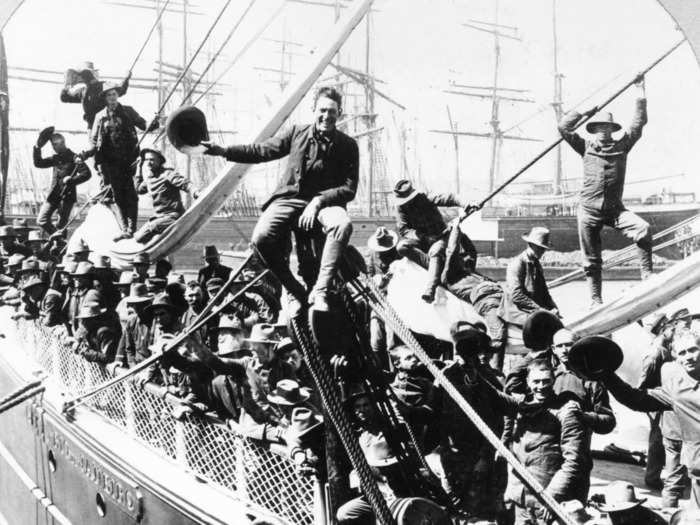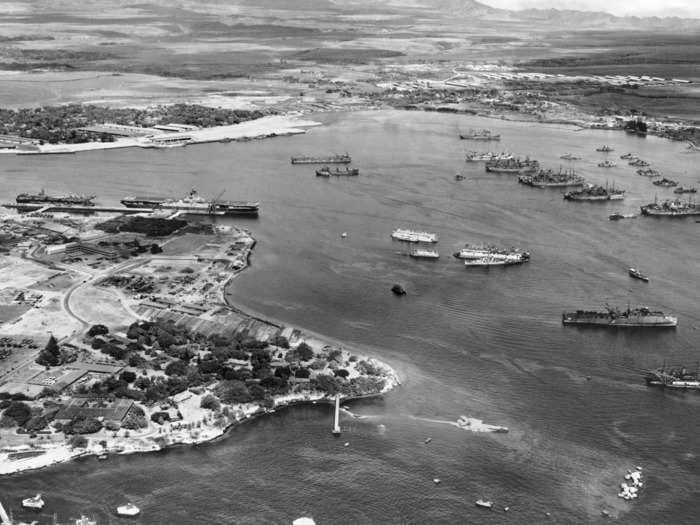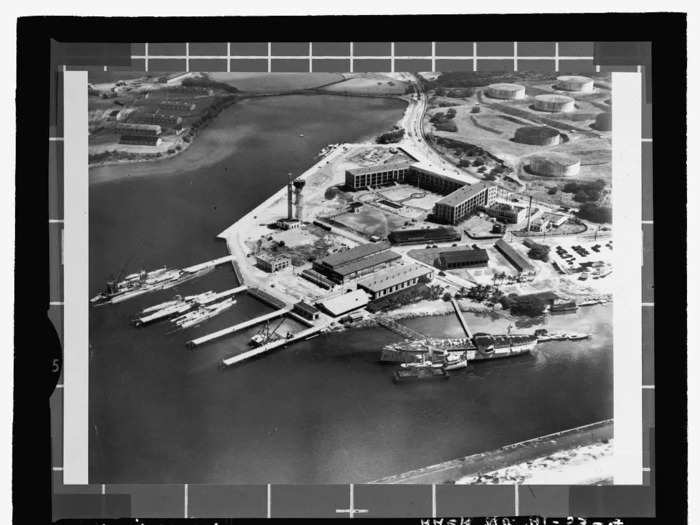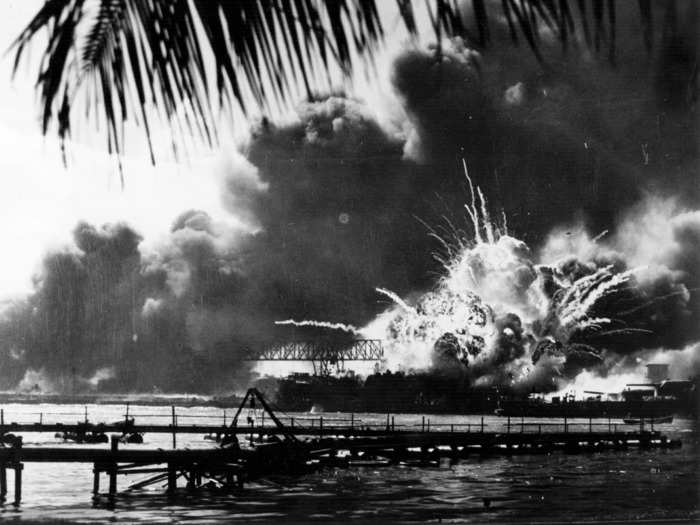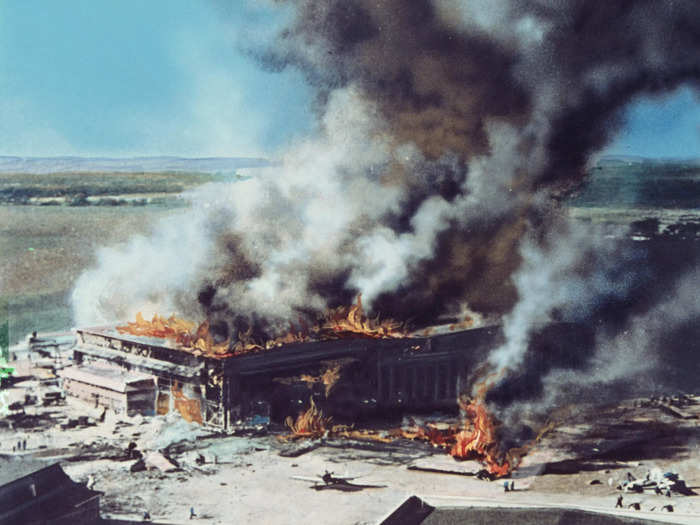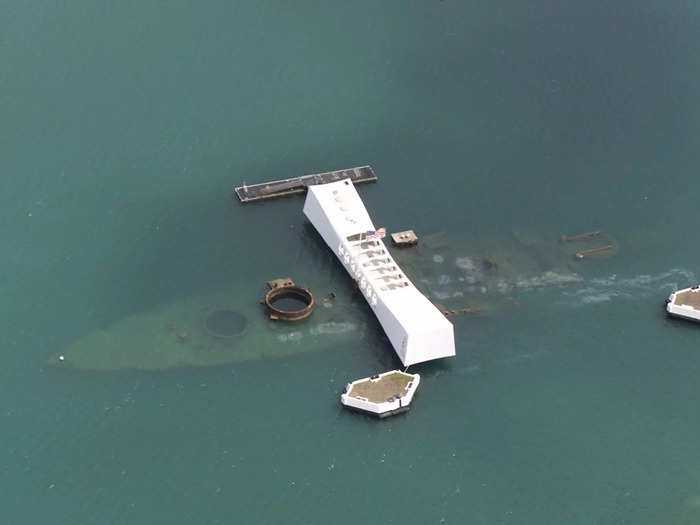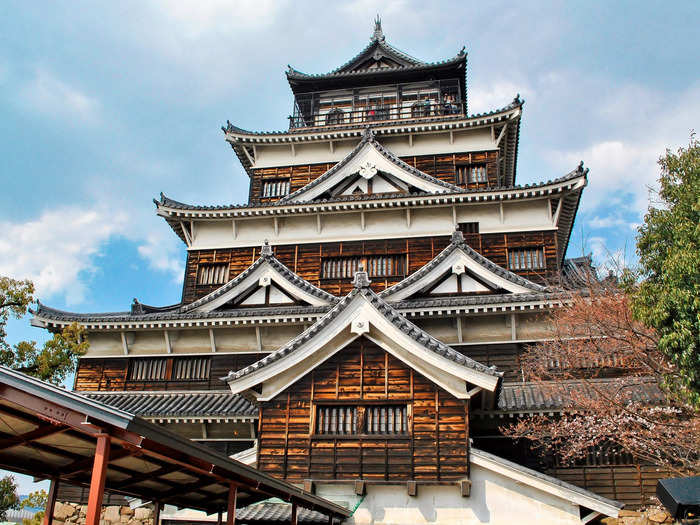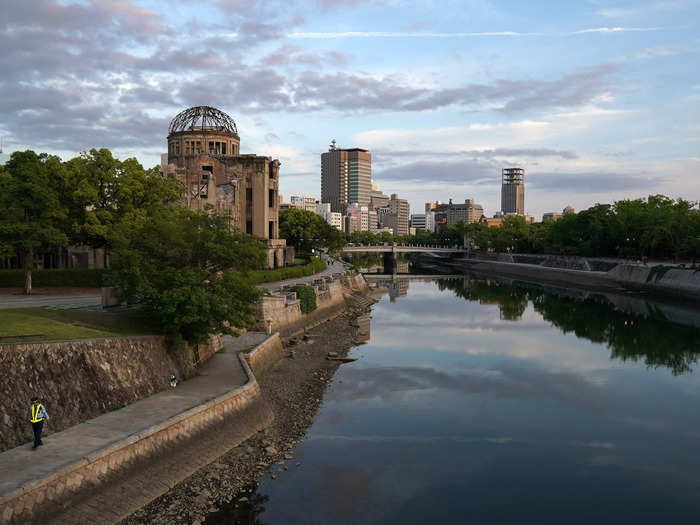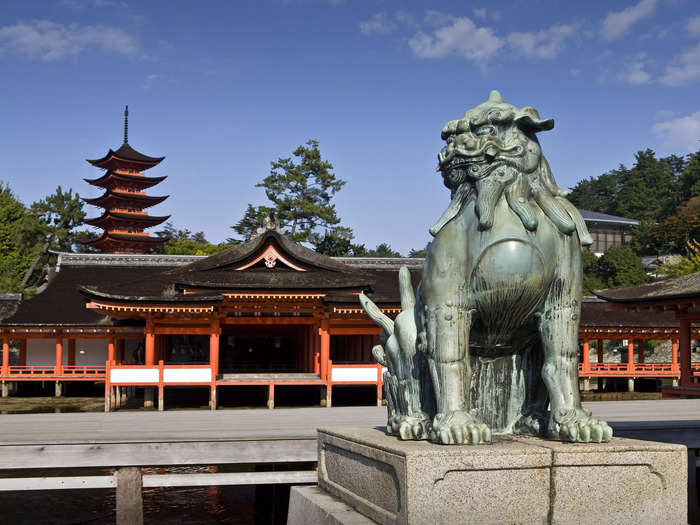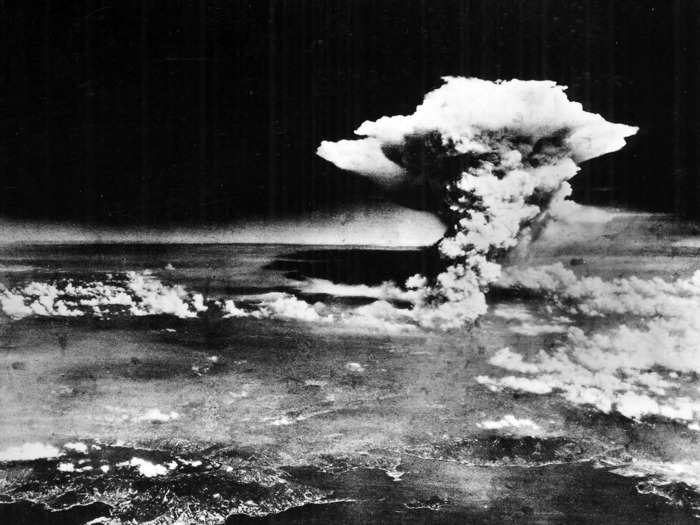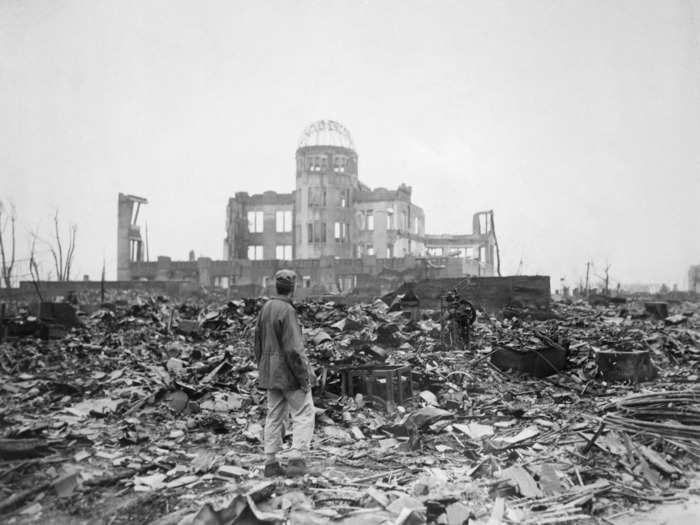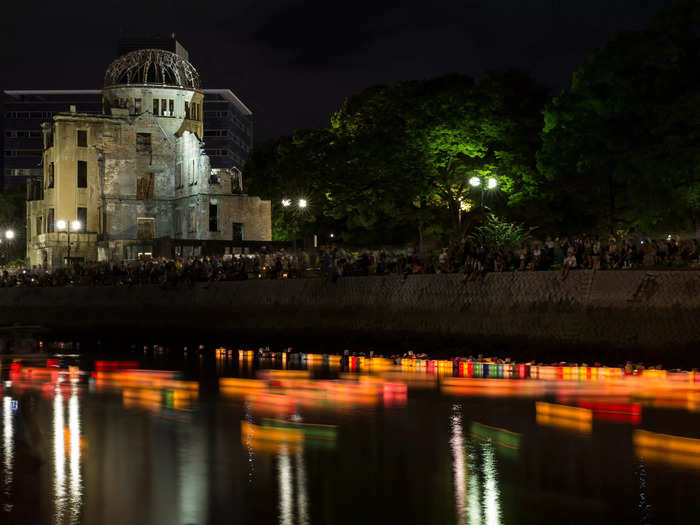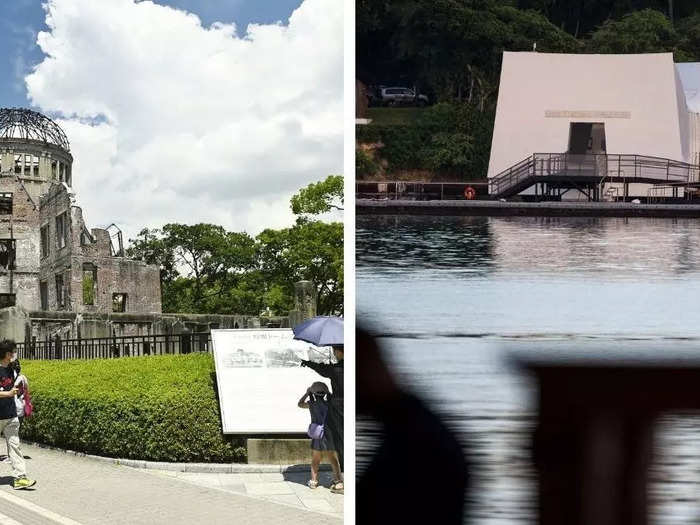A side-by-side of Pearl Harbor and HiroshimaRight: Photo by Epics/Getty Images Left: Getty Images
- Pearl Harbor was an ancient Hawaiian fishing spot before becoming a key US naval base. It was attacked in 1941.
- The US dropped an atomic bomb on Hiroshima in 1945.
Hiroshima and Pearl Harbor officially became sister parks in June as a way to amend the relationship between the United States and Japan after World War II.
The agreement serves to forge a bond between two historic sites that were critical during World War II. The two countries aim to share best practices surrounding historic restoration, youth education, and tourism management.
This is the second sister park agreement between the United States and Japan. The first is a relationship between the Gettysburg National Military Park and Gifu Sekigahara Battlefield Memorial Museum. The two sites were large parts of the American and Japanese civil wars, respectively.
Before either was involved in World War II, they had their own rich histories as places of industry, learning, and culture. Take a look back at how these two islands in the Pacific ended up being some of the most pivotal points in World War II.
Pearl Harbor was initially a fishing and diving area called Wai Momi, which translates to "Water of Pearl" in ancient Hawaiian.
Aerial view of Pearl Harbor naval base. US Navy/Interim Archives/Getty Images
Because Pearl Harbor was originally blocked by coral reefs, it was impossible to use as a port.
A diver swims in the Caves of Lava Tubes, Cathedrals of Lanai, Maui. Reinhard Dirscherl/ullstein bild via Getty Images
In 1840, a naval officer determined that if the reef were completely removed, the harbor could be accessed and used for the US Navy.
The US gained exclusive rights to Pearl Harbor in 1887.
U.S. Naval Base, Pearl Harbor, Pearl City Peninsula Library of Congress
However, it wasn't until the Spanish-American War that the US Navy realized the importance of Pearl Harbor.
Soldiers smile on deck of the "Rio de Janeiro" as it leaves for Manila during the Spanish-American war. Archive Photos/Getty Images
After the US captured the Philippines, they realized they needed a closer access point to better control their new territory, and Hawaii and Pearl Harbor were in a great location.
In 1902, the channel for the entrance to Pearl Harbor was dredged, deepened, and widened to create the entrance for Pearl Harbor.
Ships fill Pearl Harbor before the Bikini Atoll atom bomb test. Underwood Archives/Getty Images
Once the entrance was completed, it was 600 feet wide and 35 feet deep, allowing the full range of vessels in the naval fleet to access to the new base.
Pearl Harbor officially became a Naval base in 1908, but the first large armored ship didn't enter and anchor there until the USS California in 1911.
U.S. Naval Base, Pearl Harbor, Waterfront Facilities, Various locations throughout base Franzen, David via Library of Congress
Thirty years after the first ship crossed into Pearl Harbor, it was bombed by Japanese pilots on December 7, 1941.
The American destroyer USS Shaw explodes during the Japanese attack on Pearl Harbor. Keystone/Hulton Archive/Getty Image
Until that point in time, the US had supported Britain in its fight against Germany in early 1941 and had interfered with Japan's plan of military expansion.
Bombing Pearl Harbor was a tactically important move by Japan. If Japan could successfully destroy the US Pacific fleet then they could prevent them from interfering with Japanese naval operations.
The attack killed 2,403 people and destroyed or damaged 19 US Navy ships.
Smoke rises from the burning buildings on Ford Island, Pearl Harbor. Epics/Getty Images
Of the 2,403 people who died that day, 2,008 were part of the Navy and 68 were civilians. The rest of the deaths were made up of 218 Army members and 109 Marines.
Nineteen US Navy Ships were destroyed or damaged, eight of which were US Battleships.
Half of the deaths at Pearl Harbor were a result of the sinking of the USS Arizona. The ship was destroyed with most of its crew on board, and the wreck of the USS Arizona remains in Pearl Harbor to this day.
The attack also garnered US support to enter the war. Despite the many casualties of the attack, US aircraft carriers, oil supplies, submarine fleets, and repair facilities remained undamaged from the attack. Additionally, two of the battleships damaged in the bombing were repaired and returned to service.
In place of the sunken USS Arizona now stands a memorial commemorating the sunken ship and Pearl Harbor.
The USS Arizona Pearl Harbor memorial sits atop the wreckage of the USS Arizona Kevin Winter/Touchstone Pictures/Getty Images
The memorial to the USS Arizona is now a part of the sister park agreement with the memorial in Hiroshima.
Hiroshima began as a castle town surrounded by inner and outer moats.
A photo of Hiroshima Castle in the Hiroshima Prefecture of Japan. Martha Barreno/VW PICS/Universal Images Group via Getty Images
It began to develop as a larger city through the 17th and 18th centuries.
The warlord, Terumoto Mōri, chose the location to build his castle and named it Hiroshima.
In the 19th century, Hiroshima became the Hiroshima prefecture during the Edo period and was established as a city in 1889.
A police officer scans the street by the Atomic Bomb Dome memorial in Hiroshima. Tomohiro Ohsumi/Getty Images
Hiroshima eventually became a core city of the Chugoku and Shikoku regions before World War II broke out.
In pre-war times, Hiroshima was an industrial and educational center. Additionally, the city developed a strong military presence and housed various military regiments.
For a brief moment, Hiroshima served as the provisional capital in 1895 during the Sino-Japanese War.
Itsukushima Shrine on Myajima Island in Hiroshima, Japan. Jose-Fuste RAGA/Gamma-Rapho via Getty Images
On August 6, 1945, the United States dropped an atomic bomb on Hiroshima. The bomb is estimated to have killed between 90,000 and 166,000 people in the four months after the initial explosion.
An aerial photograph of Hiroshima shortly after the "Little Boy" atomic bomb was dropped in 1945 Universal History Archive/UIG/Getty
After the bomb was dropped, the ruins of the Museum of Science and Technology were one of the only buildings left standing.
The wrecked framework of the Museum of Science and Industry as it appeared shortly after the blast. Getty Images
The site of the museum now serves as the site of the Peace Memorial Park of Hiroshima City.
Paper lanterns on the river in front of Hiroshima Peace Memorial Park. Tomohiro Ohsumi/Getty Images
It has not been repaired as a reminder of the destructive power of the bomb.
In June 2023, more than 75 years after the acts of violence in Pearl Harbor and Hiroshima, the US and Japanese governments signed a sister park agreement.
A side by side of the Hiroshima and Pearl Harbor memorials. Left: David Mareuil/Anadolu Agency via Getty Images Right: Kent Nishimura/Getty Images
By connecting the two former sites of conflict, officials said they hope that they can represent a movement toward peace and reconciliation.
"This new Sister Park Arrangement will expand the community of Americans and Japanese who visit Pearl Harbor and Hiroshima, learn their histories, and chart a better pathway forward," said US Ambassador to Japan Rahm Emanuel during the ceremony.

